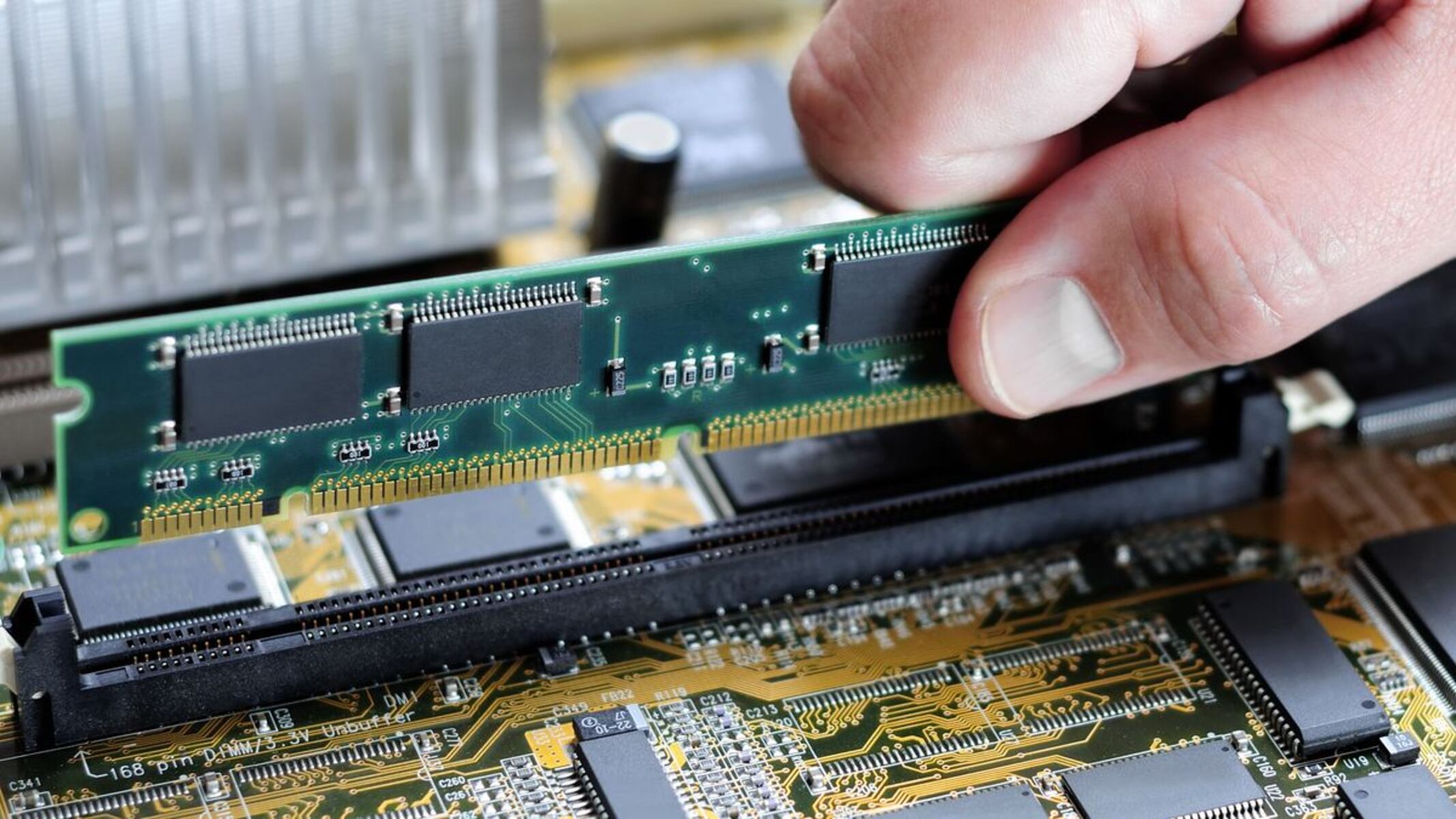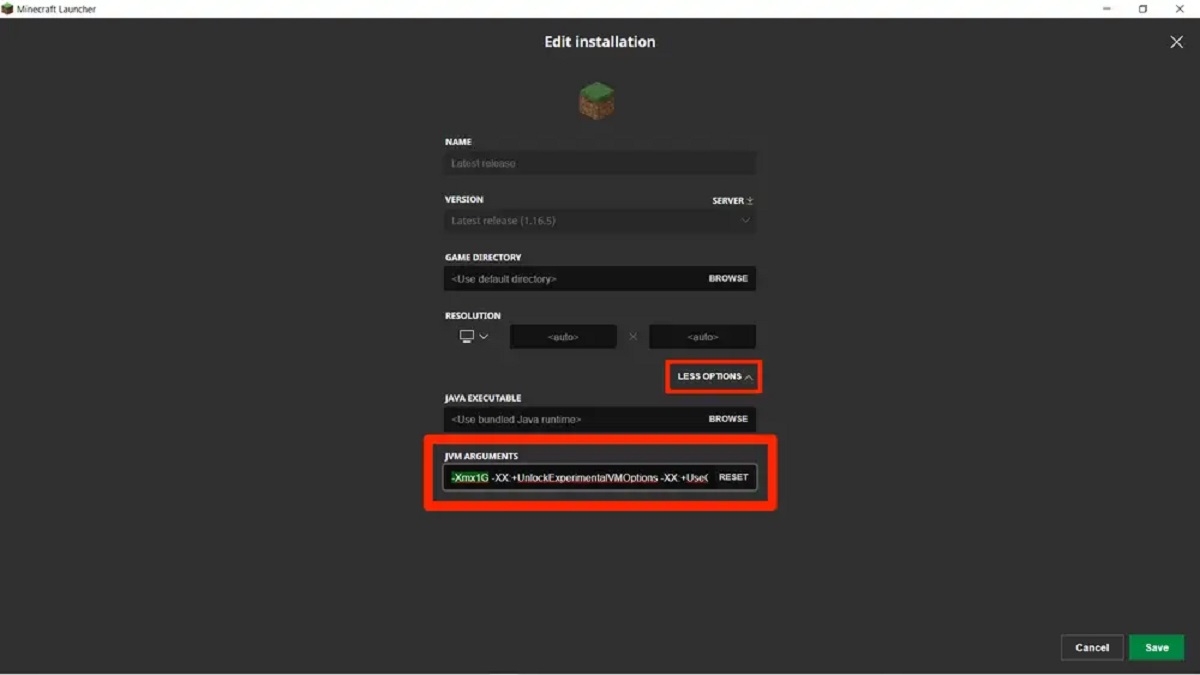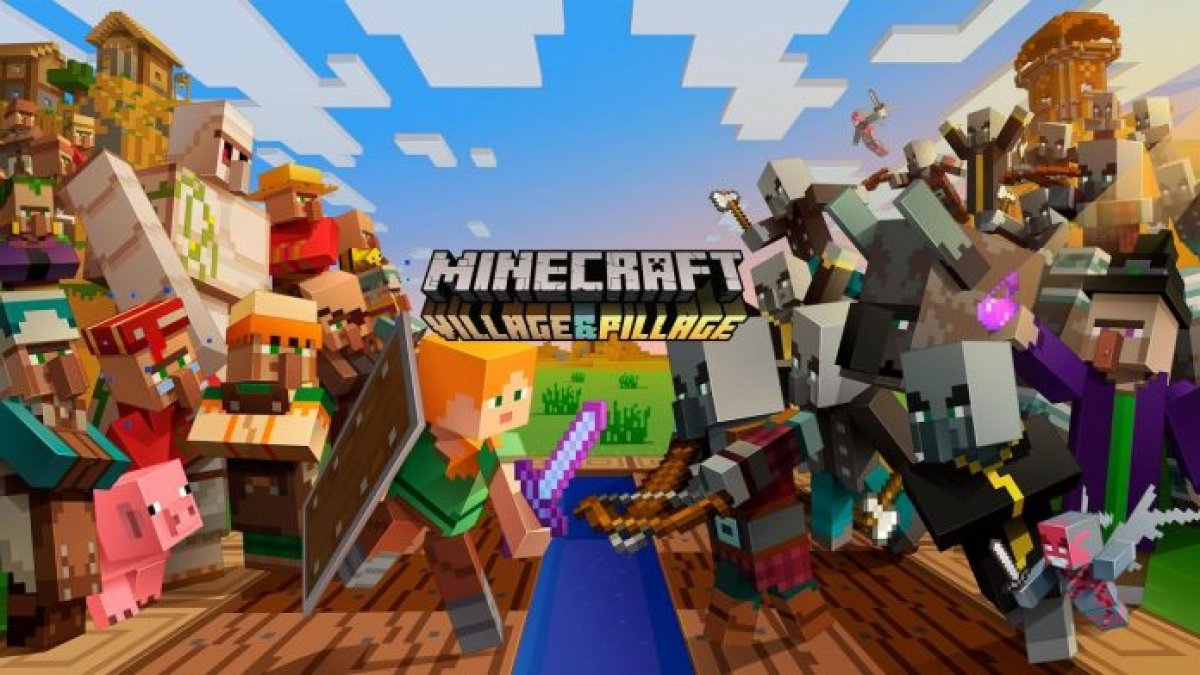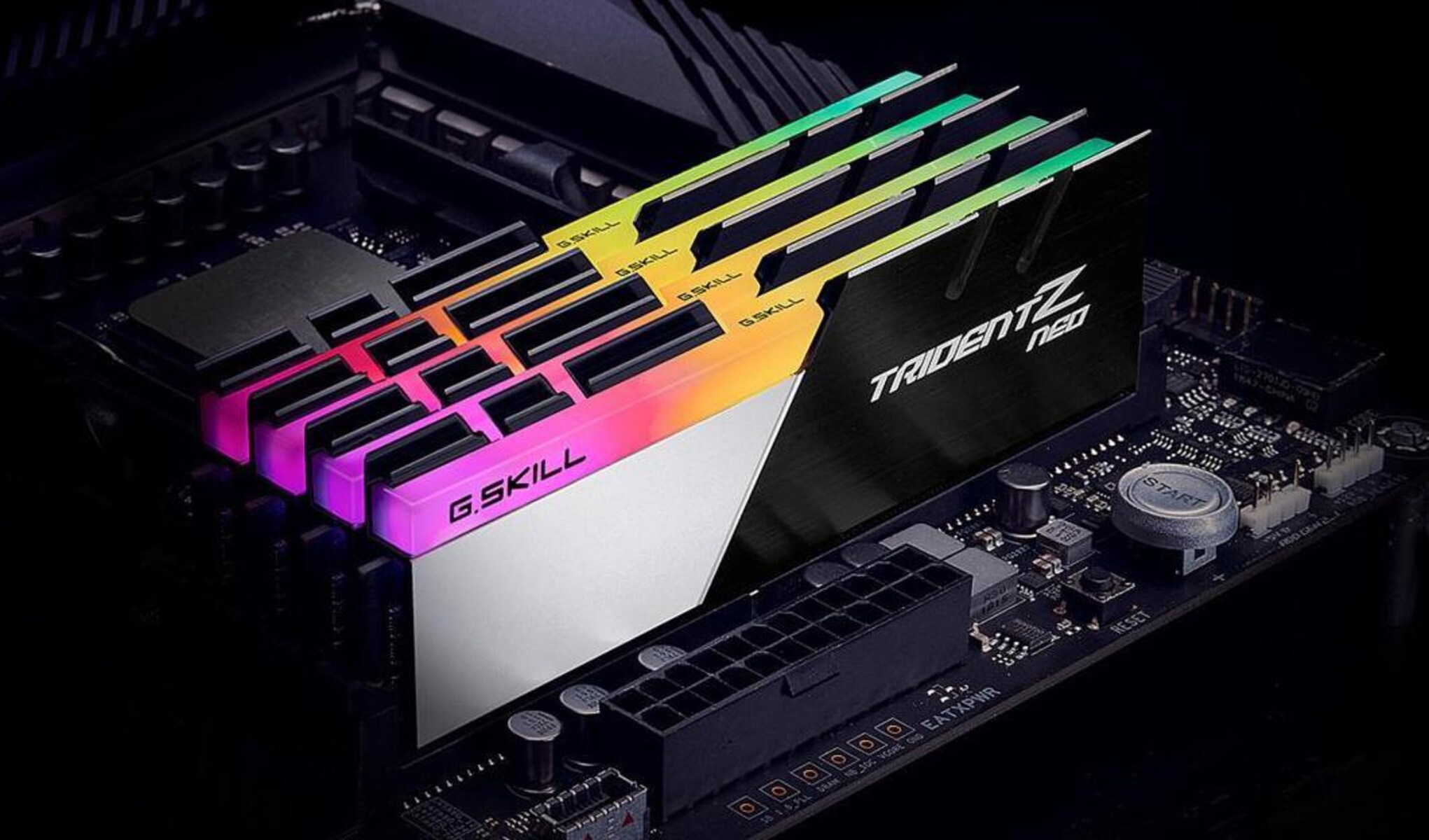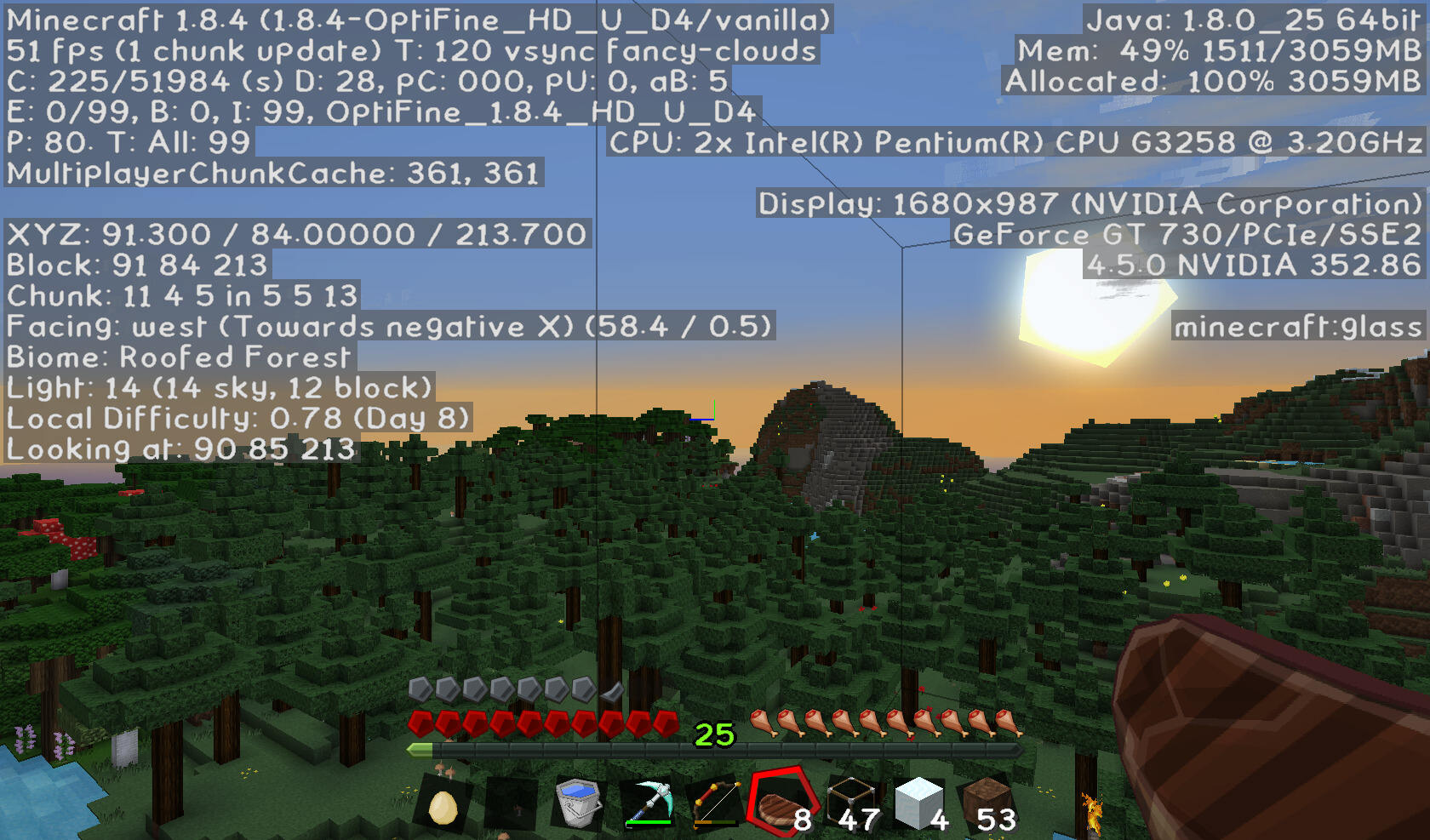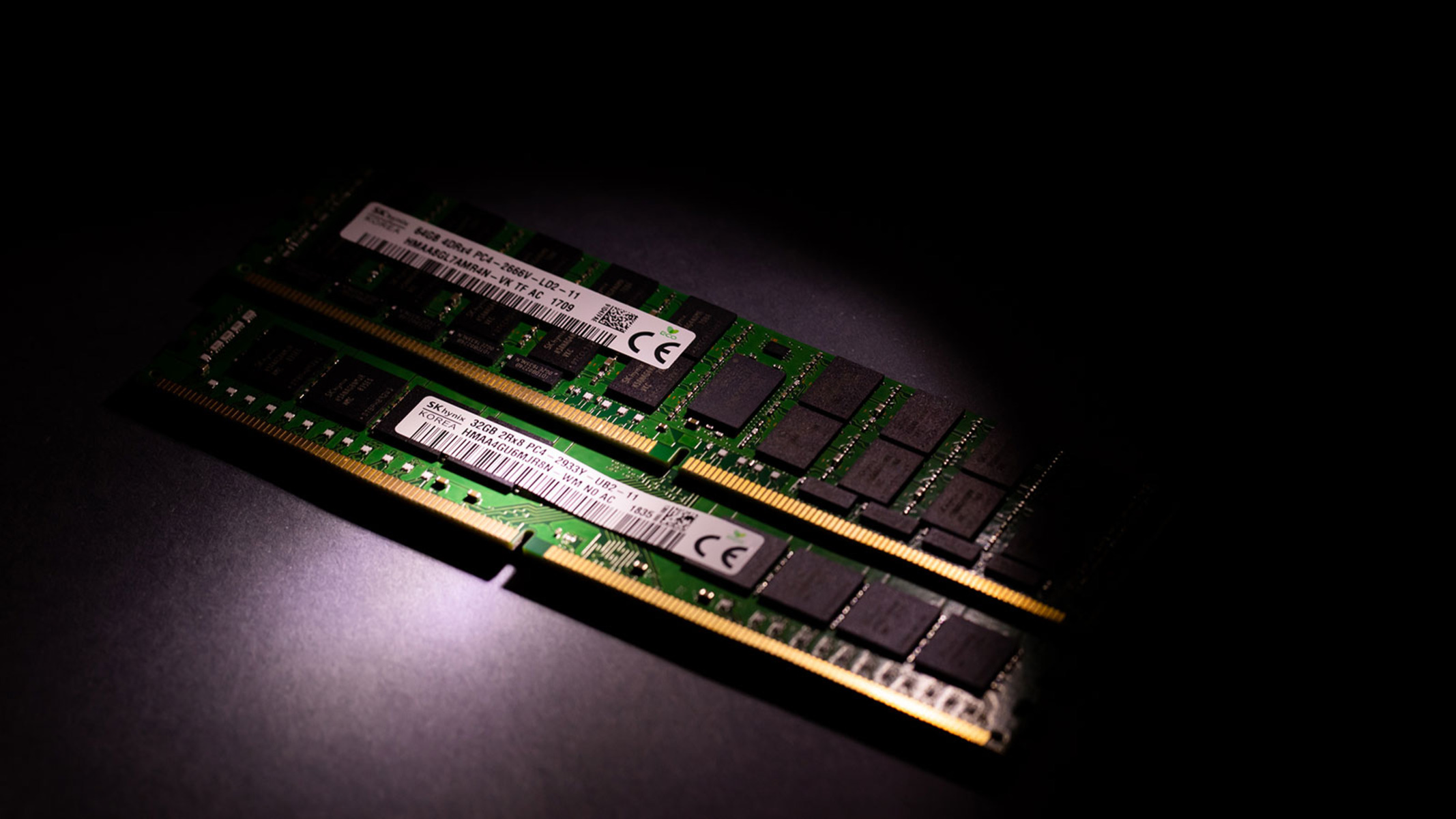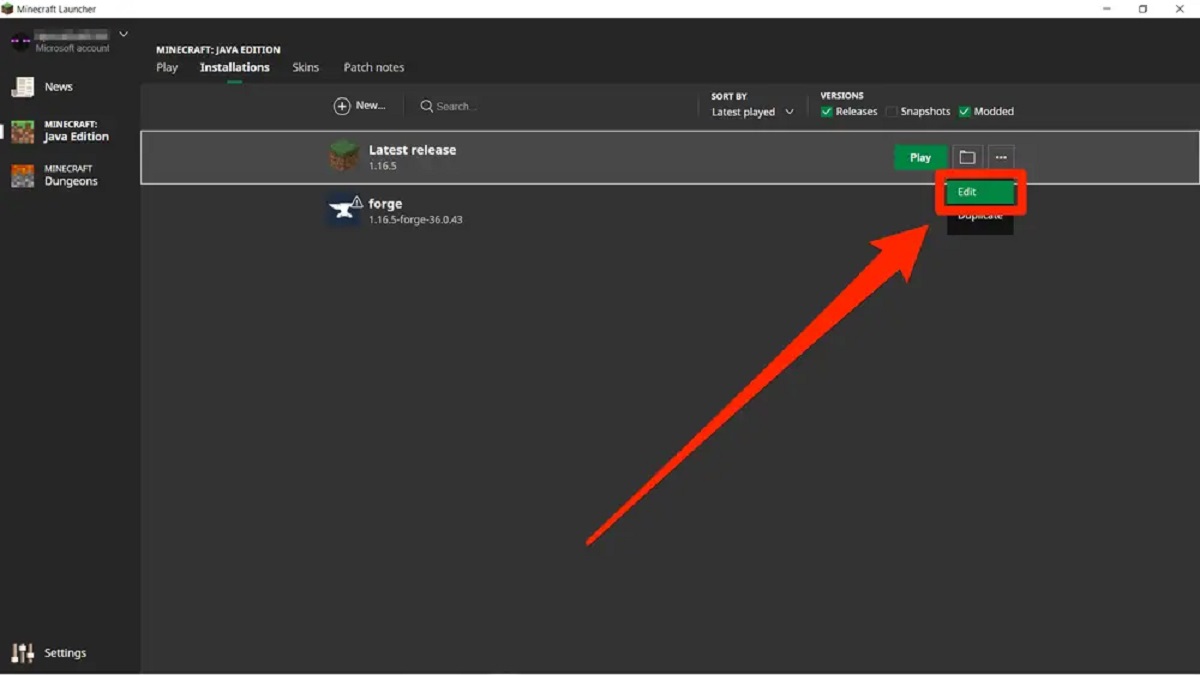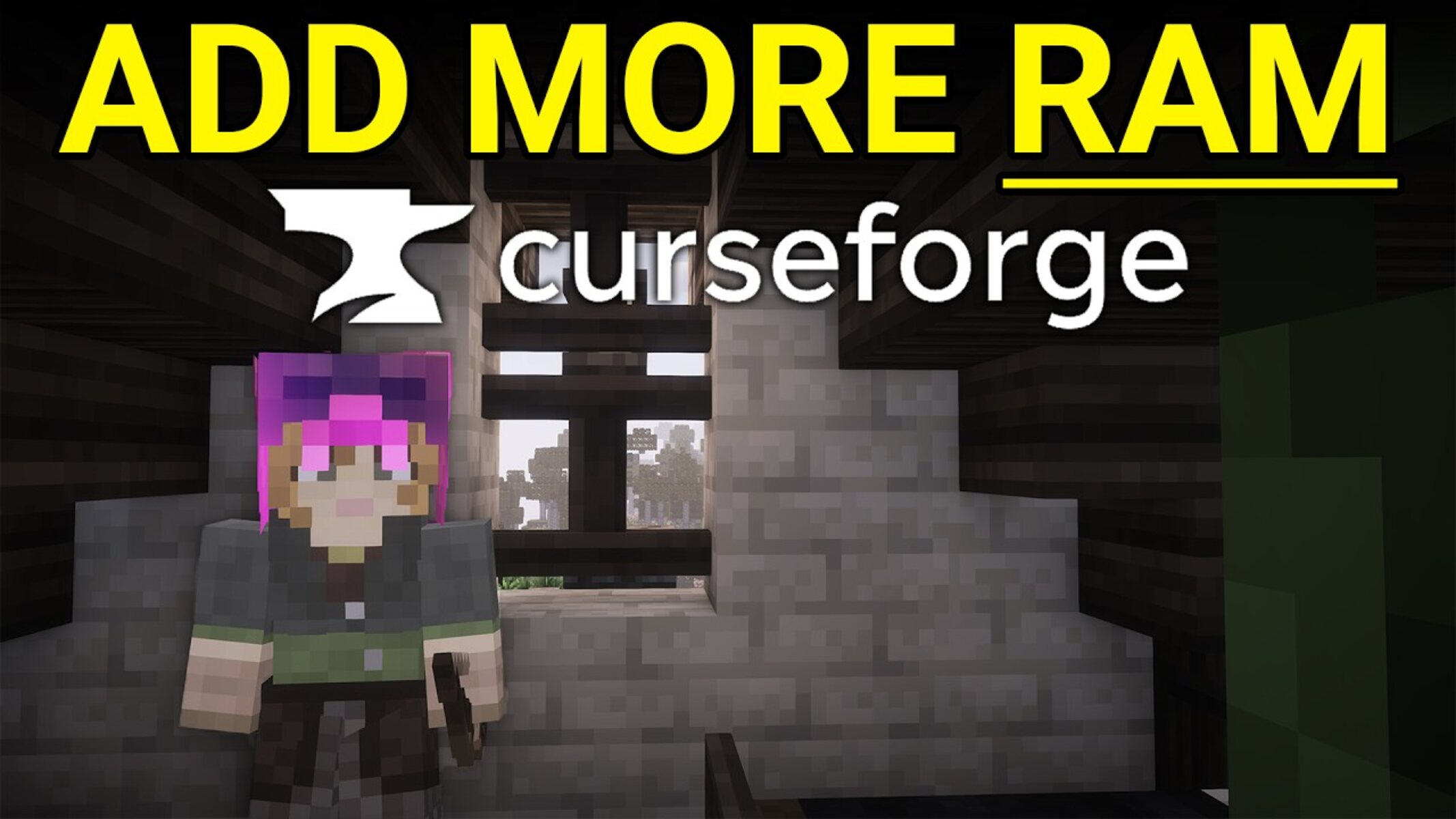Introduction
Minecraft is an immensely popular sandbox game that has captured the hearts of millions of players around the world. Whether you’re on a creative quest to build your dream world or embarking on thrilling adventures in survival mode, Minecraft offers endless possibilities for exploration and creativity.
As you dive deeper into the game and start to explore more complex mods and server setups, you may find yourself facing a crucial question: how much RAM should you allocate to Minecraft? RAM, or Random Access Memory, is essential for running the game smoothly and ensuring a lag-free experience.
When it comes to determining the ideal amount of RAM for Minecraft, there are multiple factors to consider. The specifications of your computer, the type of gameplay you engage in, and whether you are running a Minecraft server all play a role in determining the appropriate RAM allocation.
In this article, we will explore the various factors to consider when determining how much RAM to allocate to Minecraft. We will discuss the basic system requirements, the recommended amount of RAM for different gameplay scenarios, the potential consequences of too little or too much RAM, and provide valuable optimization techniques to help you get the most out of your Minecraft experience.
By understanding the factors involved in choosing the right amount of RAM for Minecraft, you can ensure that the game runs smoothly and enjoyably, without any frustrating lag or performance issues.
RAM Requirements for Minecraft
Before delving into the specifics of RAM allocation, it’s important to have a clear understanding of Minecraft’s basic RAM requirements. The amount of RAM needed to run Minecraft effectively can vary depending on several factors.
The first and foremost aspect to consider is whether you are playing the game in single-player mode or hosting a server for multiplayer gameplay. Single-player mode requires significantly less RAM compared to hosting a multiplayer server. This is because when playing alone, the game only needs to allocate resources for your own gameplay, whereas hosting a server necessitates allocating resources for multiple players.
Additionally, the version of Minecraft you are playing also influences the RAM requirements. Older versions of the game may have lower RAM demands, while newer versions with more advanced features and mods might require additional memory allocation.
Furthermore, the presence of resource packs, mods, and plugins can impact the RAM requirements. Resource packs and mods add extra graphical and gameplay elements to the game, which in turn increases the demand for RAM. Similarly, if you plan to use plugins on your Minecraft server, it’s crucial to consider their individual RAM requirements, as they can significantly impact overall performance.
It’s worth noting that Minecraft is programmed in Java, which utilizes both RAM and CPU resources. Therefore, while RAM allocation is vital, optimizing Java settings and ensuring proper CPU performance are equally important for a smooth gaming experience.
Now that we have a basic understanding of the factors influencing Minecraft’s RAM requirements, let’s delve deeper into how to determine the appropriate amount of RAM to allocate for an optimal gameplay experience.
Factors to Consider
When deciding how much RAM to allocate to Minecraft, there are several key factors to take into consideration. By understanding these factors, you can ensure that your game runs smoothly and efficiently, without any performance issues.
1. System Specifications: The specifications of your computer play a crucial role in determining the amount of RAM you can allocate to Minecraft. Computers with higher RAM capacities and faster processors will allow for larger RAM allocations, resulting in smoother gameplay. It’s important to check your computer’s specifications and ensure that it meets Minecraft’s recommended system requirements.
2. Gameplay Scenario: The type of gameplay you engage in also impacts the RAM requirements. If you primarily play on single-player mode, you can allocate a smaller amount of RAM compared to hosting a multiplayer server. Multiplayer servers require more RAM to accommodate multiple players and maintain a lag-free experience.
3. Resource Packs and Mods: The use of resource packs and mods can significantly impact RAM requirements. These additions enhance the visual appeal and gameplay experience but also consume more system resources. Take into account the specific resource packs and mods you plan to use and consider their individual RAM demands.
4. Minecraft Server: If you are hosting a Minecraft server, you’ll need to allocate additional RAM to ensure optimal performance. The number of players, the complexity of mods and plugins, and any additional server-side features will all contribute to the RAM requirements. Consult the documentation or guidelines provided by the server software to determine the recommended RAM allocation for your specific server setup.
5. Other Concurrent Applications: Consider the other applications or processes running on your computer simultaneously with Minecraft. If you frequently have multiple applications open, such as web browsers, music streaming software, or video editing programs, it’s important to account for their RAM usage as well. Allocating enough RAM to accommodate the demands of both Minecraft and your other applications will prevent slowdowns or crashes.
By taking all of these factors into consideration, you can make an informed decision regarding the optimal amount of RAM to allocate to Minecraft. Ensuring that your system has enough RAM to handle the demands of the game and any additional features will lead to a seamless and enjoyable Minecraft experience.
Basic System Requirements
Before determining the amount of RAM to allocate to Minecraft, it’s essential to ensure that your computer meets the basic system requirements for the game. By meeting these requirements, you can guarantee a smooth and enjoyable gaming experience.
1. Operating System: Minecraft is compatible with various operating systems, including Windows, macOS, and Linux. Make sure that your computer is running a supported operating system version to ensure compatibility and stability.
2. Processor: Minecraft relies heavily on CPU performance. The minimum requirement is a dual-core CPU with a clock speed of at least 2.5 GHz. However, for optimal gameplay, a quad-core CPU or higher clock speed is recommended.
3. RAM: RAM is crucial for running Minecraft smoothly. The minimum requirement is 4GB, but it is advisable to have at least 8GB for a more lag-free experience. More demanding scenarios, such as hosting a multiplayer server, may require even more RAM allocation.
4. Storage: Minecraft requires a minimum of 4GB of available storage space for game files. However, keep in mind that additional storage will be needed for mods, resource packs, and saved games. Having ample disk space will prevent any storage-related issues in the future.
5. Graphics Card: Minecraft is not overly demanding in terms of graphics. Most modern integrated graphics solutions or dedicated graphics cards should be sufficient for smooth gameplay. However, having a dedicated graphics card with at least 2GB VRAM is recommended for a better visual experience.
6. Internet Connection: If you plan on playing multiplayer or accessing mods and resource packs from online sources, a stable internet connection is essential. A broadband connection with decent upload and download speeds will ensure a seamless online gaming experience.
By ensuring that your computer meets these basic system requirements, you can lay a solid foundation for a smooth running Minecraft game. However, keep in mind that these are minimum requirements, and for a more optimal experience, it is advisable to have hardware that exceeds these specifications.
Minecraft Server RAM Allocation
If you plan on hosting a Minecraft server, it’s crucial to allocate an appropriate amount of RAM to ensure smooth and lag-free gameplay for all players. The server’s RAM allocation is separate from the RAM allocated for your personal gameplay.
The amount of RAM required for a Minecraft server depends on various factors, including the number of players, mods, plugins, and any additional server-side features or modifications. A small server with a few friends will require less RAM compared to a large public server with dozens or even hundreds of players.
Generally, it is recommended to allocate more RAM for the server as the number of players increases. For a server with up to 10 players, allocating 2-4GB of RAM should be sufficient. However, as the player count increases, it’s advisable to increase the RAM allocation accordingly.
Besides the number of players, mods and plugins also play a significant role in determining the server’s RAM requirements. Each mod or plugin adds extra functionality and consumes additional memory. Some mods and plugins may even require a specific amount of RAM to function properly. It’s crucial to check the documentation or recommendations provided by the mod/plugin developers to ensure the appropriate RAM allocation.
Optimizing the server’s performance may also require adjusting other settings, such as the view distance, tick rate, and entity activation range. These settings can affect the server’s overall resource usage, including RAM. Experimenting with these settings and finding the right balance between performance and resource allocation is essential for a smooth server experience.
It’s worth noting that the RAM allocation for the server should not exceed the available RAM on your system. Allocating too much RAM to the server can cause performance issues and potentially lead to crashes. Monitoring the server’s resource usage and keeping an eye on any performance bottlenecks will help ensure optimal gameplay for all players.
By carefully considering the number of players, mods, plugins, and server-side features, you can determine the appropriate amount of RAM to allocate for your Minecraft server. Adequate RAM allocation will guarantee a lag-free experience and allow your server to handle the demands of multiple players and additional functionalities effectively.
Choosing the Right Amount of RAM
When it comes to choosing the right amount of RAM to allocate for Minecraft, finding the perfect balance is essential. Allocating too little RAM can lead to lag, slow performance, and frequent crashes, while allocating too much RAM can be unnecessary and may cause other system issues. Therefore, it’s important to consider several factors in order to make an informed decision.
1. System Specifications: Start by assessing the specifications of your computer. Check the available RAM and ensure that you have enough capacity to allocate to Minecraft without impacting the performance of other applications or processes running concurrently.
2. Gameplay Scenarios: Determine whether you primarily play single-player or engage in multiplayer gameplay. Single-player Minecraft requires less RAM compared to hosting or playing on a multiplayer server. Consider the number of players, mods, and plugins involved in your gameplay scenario when deciding the amount of RAM to allocate.
3. Resource Packs and Mods: If you plan to use resource packs or mods, keep in mind that they can significantly impact RAM usage. Higher resolution resource packs and complex mods generally require more RAM to run smoothly. Be mindful of the specific resource packs and mods you use and consider their RAM requirements when making your decision.
4. Minecraft Server: If you are hosting a server, take into account the number of players and the server-side features you intend to provide. The server will require its own dedicated RAM allocation. Consult the documentation or guidelines provided by the server software to determine the recommended RAM allocation for your specific setup.
5. Ongoing Optimization: Optimize Minecraft’s settings and performance to make the most of the allocated RAM. Adjusting the view distance, entity spawns, and graphics settings can help manage system resources effectively. Additionally, regularly updating Minecraft and any installed mods/plugins can improve performance and resource utilization.
By carefully considering these factors, you can choose the right amount of RAM to allocate for Minecraft. It’s important to find a balance that ensures smooth gameplay without compromising the performance of your computer or server. Regular monitoring and adjustments may be necessary to optimize resource allocation and enhance the overall Minecraft experience.
The Effects of Insufficient RAM
Insufficient RAM allocation for Minecraft can have noticeable effects on the game’s performance and overall gameplay experience. When Minecraft does not have enough RAM available to handle its resource-intensive processes, several issues may arise.
1. Lag and Slow Performance: One of the most common effects of insufficient RAM is lag and slow performance. Minecraft may experience delays in rendering blocks, player movement, and interactions with the environment. This can make the game feel unresponsive and hinder gameplay enjoyment.
2. Frequent Crashes: Insufficient RAM can cause Minecraft to crash frequently. When the game exceeds the allocated RAM, it may run out of memory and abruptly close. This can be frustrating, especially during critical moments or while hosting a multiplayer server.
3. World Generation Issues: Inadequate RAM can result in problems during world generation. When exploring new areas, Minecraft may struggle to load new chunks due to limited available memory. This can lead to missing terrain, incomplete structures, or even chunks that fail to generate altogether.
4. Reduced Mod and Plugin Performance: Resource-intensive mods and plugins require sufficient RAM to function properly. With insufficient RAM, these additional features may suffer from degraded performance. Complex mods may experience reduced functionality or exhibit glitches, while plugins may not run as smoothly or efficiently as intended.
5. Limited Multiplayer Experience: When hosting a multiplayer server, insufficient RAM can limit the number of concurrent players. The server may struggle to handle multiple players’ actions and calculations, leading to desynchronization, slower response times, and decreased overall gameplay experience for everyone involved.
6. Restricted Resource Pack Usage: High-resolution resource packs enhance the visual quality of Minecraft but require additional memory to render. Insufficient RAM may prevent you from using resource packs or limit you to lower resolution options, diminishing the immersive experience offered by these graphical enhancements.
To avoid these issues, it is crucial to allocate an appropriate amount of RAM to Minecraft, considering the factors mentioned earlier. Adequate RAM allocation will ensure smooth performance, reduce lag, prevent crashes, and allow for an enhanced gameplay experience, especially when playing on multiplayer servers or using resource-intensive mods and plugins.
The Possible Consequences of Too Much RAM
While it may seem counterintuitive, allocating too much RAM to Minecraft can also have negative consequences. It’s important to strike a balance and avoid excessive RAM allocation to prevent potential issues that may arise as a result.
1. Memory Fragmentation: Allocating more RAM than necessary can lead to memory fragmentation. Memory fragmentation occurs when the allocated memory is not fully utilized and becomes scattered, resulting in inefficient memory management. This can potentially hinder overall system performance.
2. Resource Competition: Allocating excessive RAM to Minecraft can lead to resource competition between the game and other applications running on your computer. This can cause slowdowns or crashes in other processes, affecting the overall system performance and user experience.
3. Delayed Garbage Collection: Garbage collection is the process by which the Java Virtual Machine (JVM) frees up memory by removing unused objects. When too much RAM is allocated, the garbage collection process may become delayed. This can introduce lag and delays during gameplay, adversely impacting the overall performance.
4. Increased System Heat: Allocating excessive RAM to Minecraft can cause your system to generate more heat. This additional heat can lead to higher CPU and GPU temperatures, potentially resulting in thermal throttling and decreased performance over time. It’s important to ensure proper cooling measures are in place to mitigate this issue.
5. Wasted System Resources: Allocating more RAM than necessary means that system resources are not utilized efficiently. This wasted RAM could have been allocated to other applications or processes that require it, improving the overall system performance and multitasking capabilities.
6. Dependency on Java Garbage Collection: Minecraft heavily relies on Java garbage collection to manage memory. Allocating excessive RAM can increase the frequency and duration of garbage collection pauses, causing temporary freezes or stuttering during gameplay.
To avoid these consequences, it’s important to allocate an appropriate amount of RAM based on your specific requirements. It’s recommended to refer to Minecraft’s recommended system requirements and consider the other factors mentioned earlier to determine the optimal RAM allocation for your system and usage scenario. Striking the right balance will ensure smooth and efficient performance without wasting system resources or causing unnecessary issues.
Optimization Techniques
To improve the performance and efficiency of Minecraft, there are several optimization techniques you can employ. These techniques can help maximize resource utilization, reduce lag, and enhance the overall gaming experience. Here are some effective optimization techniques:
1. Install Optifine: Optifine is a popular optimization mod for Minecraft that enhances performance, improves graphics settings, and adds various customization options. Installing Optifine can significantly improve FPS (frames per second) and reduce lag, especially on lower-end systems.
2. Use Lightweight Resource Packs: Resource packs with higher resolutions require more system resources to render. Consider using lightweight resource packs or lower-resolution options to reduce the strain on your system’s GPU and improve performance.
3. Optimize Java Settings: Adjusting the Java settings can help optimize Minecraft’s RAM usage. Allocate a sufficient amount of RAM based on your system’s capabilities, enable Java’s aggressive garbage collection, and disable unnecessary Java arguments to streamline performance.
4. Manage Background Applications: Close unnecessary background applications and processes to free up system resources. Resource-intensive applications, such as web browsers, streaming services, or video editing software, can consume significant CPU and RAM, impacting Minecraft’s performance.
5. Adjust In-Game Settings: Fine-tune Minecraft’s in-game settings to strike a balance between visual quality and performance. Lower render distance, graphics settings, and particle effects to reduce the strain on your system resources and improve FPS.
6. Optimize Chunk Loading: Minecraft loads chunks as you explore the world, which can impact performance. Decrease the view distance to limit the number of chunks being loaded at once. Additionally, consider using mods or plugins that optimize chunk loading to further enhance performance.
7. Keep Minecraft Updated: Regularly update Minecraft to the latest version to take advantage of performance improvements and bug fixes. Newer versions often contain optimizations that can enhance the overall gameplay experience.
8. Monitor System Performance: Utilize system monitoring tools to keep an eye on CPU, GPU, and RAM usage while playing Minecraft. This can help pinpoint any performance bottlenecks or identify resource-intensive activities that can be optimized further.
By implementing these optimization techniques, you can significantly improve Minecraft’s performance, reduce lag, and ensure a smoother and more enjoyable gaming experience. Experiment with different settings and tweaks to find the optimal configuration that suits your system’s capabilities and personal preferences.
Conclusion
Determining the appropriate amount of RAM to allocate to Minecraft is crucial for a smooth and enjoyable gaming experience. By considering factors such as system specifications, gameplay scenarios, resource packs, mods, and Minecraft server hosting, you can make an informed decision about the RAM allocation.
Insufficient RAM can lead to lag, crashes, world generation issues, and reduced performance, while allocating too much RAM can result in memory fragmentation, resource competition, and delayed garbage collection. Striking the right balance is crucial to optimize system resources and ensure optimal gameplay.
In addition to allocating the right amount of RAM, implementing optimization techniques such as using Optifine, lightweight resource packs, adjusting in-game settings, and monitoring system performance can further enhance Minecraft’s performance and reduce lag.
Remember to regularly update Minecraft to benefit from performance improvements and bug fixes. Stay mindful of any updates to mods or plugins you use and ensure compatibility with the Minecraft version you’re running.
Ultimately, finding the optimal RAM allocation and employing optimization techniques will create an immersive and enjoyable Minecraft experience. Monitor system performance, make adjustments as needed, and continue to explore new optimizations to stay ahead of the game.
With careful consideration and optimization, you can embark on incredible adventures and build extraordinary worlds in Minecraft, all while enjoying smooth gameplay and an unforgettable gaming experience.







